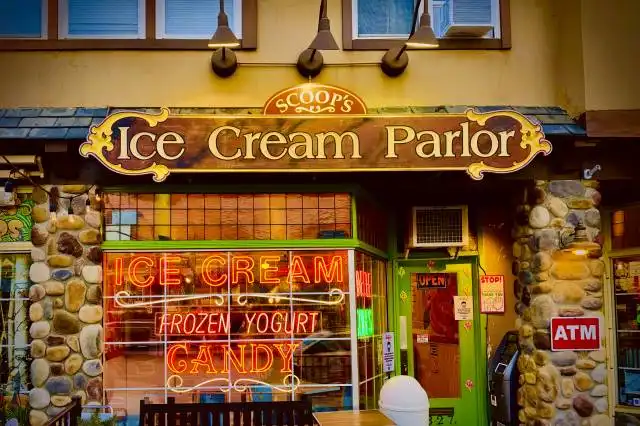Start a Coffee Shop
Brewing Dreams: Creating Your Own Caffeine-Fueled Sanctuary
| Updated


COFFEE SHOP
Picture the familiar aroma of roasted beans wafting through the door as customers shuffle in for their daily caffeine fix! Oh, dear entrepreneur, you're flirting with the idea of owning a Coffee Shop, a caffeine-fueled sanctuary that invites lively conversations and quiet resilience. In nine symphonic latté-art filled steps, you could be serving espressos, cappuccinos, and warm smiles to swarms of dedicated coffee lovers. Remember, it's not just about energizing people; it’s about providing a haven where ideas, stories, and coffee blend in perfect harmony.
Jump to Business Plan
RELATED BUSINESS IDEAS
Browse ALL Food & Beverage Entrepreneurship Business Ideas
Discover Your Perfect Domain
Unlock the door to your online success with our hand-picked selection of premium domain names. Whether you're starting a new venture or rebranding an existing one, the right domain can set the tone for your digital presence. Browse through our curated list, each with its unique potential to enhance your brand's visibility and credibility.
COFFEE SHOP MINI BUSINESS PLAN
This a quick reality check to help you identify the strengths and weaknesses of your business concept before you dive in.
Expected Percent Margin:
- Gross Margin: 85-95%
- Net Profit Margin: 5-10%
Earnings Expectations:
- Daily Earnings: $250 - $700
- Weekly Earnings: $1,750 - $4,900
- Monthly Earnings: $7,500 - $21,000
- Annual Earnings: $90,000 - $252,000
Actions to Hit Those Numbers:
1. Create a Robust Business Plan:
- Define your unique selling proposition, target market, marketing plans, and financial forecasts.
2. Secure Necessary Permits and Licenses:
- Check with your local city and county officials to ensure you have all necessary permits.
3. Choose a Convenient Location:
- Look for a location with plenty of foot traffic, or a visible, well-trafficked area.
4. Plan an Engaging Menu:
- Be unique and offer regular, seasonal, and specialty items.
5. Curate a Comfortable Ambiance:
- Invest in cozy furniture, play relaxing music, and ensure the place is clean and welcoming.
6. Provide Excellent Customer Service:
- Invest in training your staff to provide exceptional service to your patrons.
7. Marketing and Advertising:
- Leverage social media platforms and local media for promotions and advertisements.
8. Maintain Quality Control:
- Regularly check on the quality of your coffee and food items to maintain high-quality standards.
9. Handle Finances Wisely:
- Regularly review your expenses and profits, adjusting prices if necessary, and seeking ways to increase revenue.
Please note that while these figures serve as a guide, actual results may vary depending upon numerous factors, including location, competition, and financial management skill.
NOT WHAT YOU HAD IN MIND? Here are more ideas



Browse ALL Food & Beverage Entrepreneurship Business Ideas
Grab Your Business Website Name
Before you get caught up in the whirlwind of setting up your business, invest in a domain name. It's a small but significant step that lays the foundation for your brand and makes it easier for customers to find and trust you. Just like you wouldn't build a house without securing the land first, don't build a business without securing your domain name.
"Why? Can't that wait?" Here's why it shouldn't
Step 1: Determine if Starting a Coffee Shop is the Right Endeavor
Breakdown of Startup Expenses
Before starting a coffee shop, it is important to understand the startup costs associated with the business. This includes the costs of renting a space, purchasing equipment, hiring staff, and obtaining licenses and permits. Additionally, it is important to consider the cost of marketing the business, such as creating a website, printing business cards, and advertising. It is also important to consider the cost of insurance, which will protect the business from any potential liabilities.
Breakdown of Ongoing Expenses
After the initial startup costs, there are ongoing expenses associated with running a coffee shop. These include the cost of supplies, such as coffee beans, cups, and other ingredients. Additionally, there are costs associated with utilities, such as electricity and water. It is also important to consider the cost of labor, which includes the cost of hiring and training staff, as well as the cost of wages and benefits.
Examples of Ways to Make Money
There are a variety of ways to make money with a coffee shop. The most common way is to sell coffee and other beverages, as well as food items such as pastries and sandwiches. Additionally, it is possible to offer catering services and special events, such as live music or movie nights. It is also possible to offer merchandise, such as mugs and t-shirts, as well as gift cards. Finally, it is possible to offer loyalty programs and discounts to encourage customers to come back.
Step 2: Name the Business
Naming a business can be a difficult task, but it is important to pick a name that is memorable and reflects the values of the business. When coming up with a name, it is important to consider the target audience and the message the business wants to convey. It is also important to make sure the name is not already taken by another business. Additionally, it is important to make sure the name is easy to spell and pronounce. It is also a good idea to research the domain name availability for the business name. This will ensure that the business has a website and an email address that match the business name. Finally, it is important to make sure the business name is trademarked to protect it from being used by another business.
Step 3: Develop a Business Plan
A business plan is an essential part of starting a coffee shop. It should include a detailed description of the business, its goals, and how it will be operated. It should also include a financial plan that outlines the startup costs, ongoing expenses, and potential sources of revenue. It should also include a marketing plan that outlines how the business will be promoted and how it will reach its target customers. Finally, it should include a management plan that outlines how the business will be managed and how it will be staffed. Developing a business plan is an important step in starting a coffee shop and should not be overlooked.
Step 4: Secure Financing
Securing financing is an important step in starting a coffee shop. Depending on the size of the business, financing may come from personal savings, a bank loan, or an investor. Before applying for financing, it is important to have a detailed business plan that outlines the startup costs, ongoing expenses, and potential sources of revenue. This will help lenders understand the business and make an informed decision about whether or not to provide financing. Additionally, it is important to research the different types of financing available and determine which is the best option for the business.
Step 5: Find a Location
Finding the right location for a coffee shop is an important step in the process. The location should be convenient for customers and should be in an area with high foot traffic. Additionally, the location should have adequate parking and be accessible to customers with disabilities. It is also important to consider the zoning regulations in the area and make sure the business is in compliance. Finally, it is important to consider the cost of renting or purchasing the space and make sure it fits within the budget.
Step 4: Secure Financing
Securing financing is an essential step in starting a coffee shop. It is important to have a clear understanding of the amount of money needed to start the business and to have a plan for how to obtain the necessary funds. One way to secure financing is to apply for a business loan from a bank or other financial institution. It is important to research the different loan options available and to understand the terms and conditions associated with each loan. Additionally, it is important to understand the repayment terms and the interest rate associated with the loan. Another option for financing is to seek out investors who are willing to invest in the business. This can be done through networking and presenting a business plan to potential investors. It is important to understand the terms and conditions of the investment and to ensure that the investor is aware of the risks associated with investing in a new business. Finally, it is important to understand the tax implications of taking on investors and to ensure that all necessary paperwork is filed with the appropriate government agencies.
Step 5: Find a Location
Finding the right location for a coffee shop is essential for success. The location should be accessible to customers, have enough space for the shop, and have the necessary utilities. Additionally, the location should be in a high-traffic area that will attract customers. It is important to consider the demographics of the area and the competition. It is also important to research the zoning laws in the area to ensure that the shop is compliant. It is also important to consider the cost of the location, both in terms of rent and utilities. It is important to find a location that is within the budget of the business.
Once the location is chosen, it is important to secure the lease. This should include a detailed description of the space, the length of the lease, and the terms of the lease. Additionally, it is important to consider the terms of the lease and the renewal options. It is also important to consider the cost of the lease and the security deposit. Finally, it is important to consider the landlord's requirements and the terms of the lease.
Step 6: Purchase Equipment
When starting a coffee shop, it is important to purchase the right equipment. This includes coffee makers, grinders, espresso machines, and other necessary items. It is important to research the different types of equipment available and to determine which type is best for the business. Additionally, it is important to consider the cost of the equipment and to make sure that it fits within the budget. It is also important to consider the ongoing maintenance costs associated with the equipment. It is important to purchase equipment that is easy to maintain and that will last for a long time. Additionally, it is important to consider the size of the equipment and to make sure that it fits in the space available. Finally, it is important to consider the warranty of the equipment and to make sure that it is covered in case of any issues.
Step 7: Hire Employees
Hiring employees is an important step in starting a coffee shop. It is important to hire the right people who are passionate about coffee and customer service. When hiring employees, it is important to consider the qualifications and experience of the applicants. It is also important to consider the cost of hiring and training employees. It is important to create a job description that outlines the duties and responsibilities of the position. Additionally, it is important to consider the cost of benefits such as health insurance, vacation time, and other perks. It is important to create a fair and competitive compensation package that will attract the best employees. Additionally, it is important to create a training program that will help employees learn the ins and outs of the coffee shop business. Finally, it is important to create an employee handbook that outlines the policies and procedures of the coffee shop. This will help ensure that employees are aware of the expectations and standards of the business.
Step 8: Market the Business
Once the business is up and running, it is important to market the business to potential customers. This can be done through a variety of methods, such as creating a website, using social media, and participating in local events. Additionally, it is important to create a brand identity and logo that will be recognizable to customers. This can be done through the use of colors, fonts, and other design elements. Additionally, it is important to create a unique tagline that will help customers remember the business. Once the brand identity is established, it is important to create a marketing plan that will help to spread the word about the business. This plan should include methods such as advertising, email campaigns, and other promotional activities. Additionally, it is important to create relationships with local businesses and organizations that can help to promote the business. Finally, it is important to track the effectiveness of the marketing efforts to ensure that the business is reaching the right audience.
Step 9: Open the Business
The ninth and final step to opening a coffee shop is to open the business. This involves a lot of preparation and hard work, but it is also the most exciting part of the process. Before opening the business, it is important to make sure that all the necessary permits and licenses have been obtained. Additionally, it is important to make sure that all the necessary equipment is in place and that the shop is properly staffed. Once the shop is ready to open, it is important to make sure that the shop is properly advertised and that customers know about the grand opening. Additionally, it is important to make sure that the shop is properly staffed and that there is enough inventory to meet customer demand. Finally, it is important to make sure that the shop is properly maintained and that the staff is properly trained to handle customer service. Opening a coffee shop is a rewarding experience, and following these nine steps will help ensure that the business is successful.
EXPLORE MORE CATEGORIES
Browse ALL Business Idea Categories
TAKE THE NEXT STEPS










